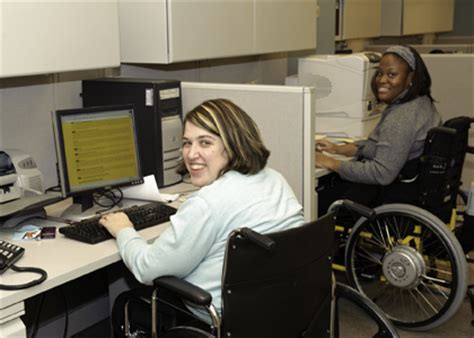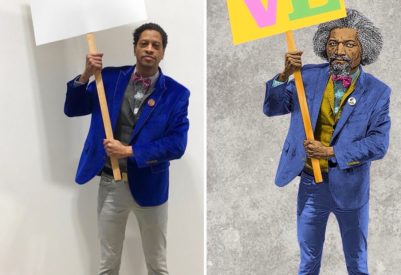
City of Rochester, Rochester-Monroe Anti-Poverty Initiative and Strong Center for Developmental Disabilities at the University of Rochester Medical Center
Poverty is disproportionately affecting people with disabilities who are more likely to be unemployed, work in low-paying industries and earn significantly less than their non-disabled counterparts, according to a new report, “Employment of People with Disabilities: Identifying Barriers and Creating Opportunities.”
The challenges for Rochester are significant and require a community-wide commitment to bring change, according to the authors of the new report. The document is the product of collaboration involving the City of Rochester, the Rochester-Monroe Anti-Poverty Initiative and the Strong Center for Developmental Disabilities at the University of Rochester Medical Center.
According to U.S. Census data, more than 34,000 Rochester residents have at least one disability, and the poverty rate for this population is 42.1 percent -- 9.2 points higher than those with no disability.
“The data in this report confirm what we’ve known for a long time,” Rochester Mayor Lovely Warren said. “Helping people with disabilities achieve full-time employment in high-skill, high-wage jobs is crucial for reducing poverty. I look forward to working with our business and community leaders to help close the gaps that disproportionately affect people with disabilities in our community. Everyone should have equal access to more jobs, safer and more vibrant neighborhoods and better educational opportunities.”
The report looks at the employment challenges for people with disabilities, such as mobility issues, intellectual and developmental conditions, and vision or hearing loss. Several factors were identified as barriers to people with disabilities who seek adequate – or any – employment:
• Low educational attainment
• Discrimination from employers
• Difficulty in transitioning off assistance programs
• Lack of transportation and adequate housing
“The City’s initial report on wage disparities in Monroe County has helped RMAPI identify the areas of greatest need in our community, and the data is being used to focus our working groups around a goal of increasing income,” said Dr. Leonard Brock, RMAPI executive director.
“This report sheds new light on the significant earnings gap between disabled and non-disabled members of the workforce and will help shape workforce development strategies that best address the needs of these individuals. Together our community will work on strategies that bring higher earnings, increase labor force participation and improve the quality and quantity of employment for them,” he said.
The report outlines several strategies to improve opportunity for people with disabilities, including:
• Inter-agency collaboration throughout Monroe County that leverages resources to help people get, retain and grow in their jobs
• Improved employment/benefits counseling by state agencies, community organizations and employers
• A commitment to hiring people with disabilities by Rochester-area employers, working in partnership with the New York Business Leadership Network
• Educational institutions’ commitment to ensure the success of students with disabilities in K-12 schools, higher education and post-graduation.
“We know that people with disabilities represent 15 to 20 percent of our community and can contribute a great deal to the workforce if they receive appropriate education, training and support, so most of all, we want to shed light on the tremendous opportunity we have as a community,” said Susan Hetherington, Ph.D., director of the Strong Center for Developmental Disabilities.
Hetherington noted positive steps already taken, including the Project SEARCH program coordinated by the Center for Developmental Disabilities in partnership with the City of Rochester, the Rochester City School District and other community partners to help students and young adults transition from school to the workforce. To date, the program has placed 80 young adults.
The Rochester Employability Summit in October brought together key stakeholders -- people with disabilities, family members, employers, disability agencies and government officials – to network and find new paths to decrease underemployment and unemployment in Rochester.
The City, the Strong Center for Developmental Disabilities and RMAPI are exploring employment disparities with the area’s health care providers. Mayor Warren is seeking to work with leaders to develop a tactical plan to help individuals with disabilities increase their earnings and become self-sufficient.
To view the full report, go to: www.cityofrochester.gov/employmentreport





